Disease focus
Our disease focus is on the following areas.
Bovine Digital Dermatitis
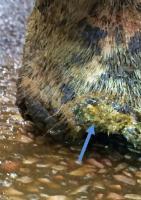
Bovine digital dermatitis was first described in Italy in 1974 and has since become a common cause of lameness in both beef and dairy cattle with a global distribution. Lesions are usually found on the horn-skin junction of the interdigital space and are intensely painful. BDD is therefore a major animal welfare concern and has significant economic implications for the dairy and beef industries. We have created a website [insert hyperlink to BDD site] that describes the aetiology, pathology and epidemiology of BDD, as well as infection control methods that we think will reduce the risk of disease transmission.
Contagious Ovine Digital Dermatitis
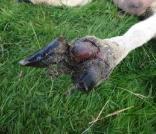
Contagious ovine digital dermatitis (CODD) is a severe and relatively recently described cause of infectious lameness in sheep, affecting approximately 35-53% of UK sheep farms and 300,000 sheep annually. Since it was first reported in the UK in 1997, this disease has continued to spread. CODD begins as an ulcertaive lesion at the coronary band which progresses, leading to under-running of the horn and eventual loss of the hoof capsule.
The aetiology of CODD is thought to be identical to that of BDD and involves pathogenic bacteria belonging to the genus Treponema, including T. medium, T. phagedenis and T. pedis.
The economic impact of CODD is unknown but is likely to match that of footrot. The Farm Animal Welfare Council, who report to the UK government on farm animal welfare issues, identified that research into this new disease should be a priority. Many farmers are struggling to control CODD infection in their flocks and there is an urgent need to understand this disease. More information on the aetiology, pathology and management of CODD can be foundhere.
Lameness in goats
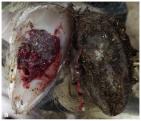
Lameness in goats has received relatively little attention, and the prevelence of lameness in the UK goat industry remains unclear. Footrot is frequently reported as a major cause of lameness in goats, although scientific evidence for this is lacking and cases of may be being misdiagnosed. A newly described foot disease in goats was brought to our attention in date, with a unique and particularly severe presentation, typified by extensive ulceration of the solar and wall horn and subsequent horn loss. Research by our group indicates that this lameness is likely to be associated with the same treponemal bacteria implicated in both BDD and CODD. We are continuing to investigate the aetiology, pathology and epidemiology of this new disease.
Non-healing white line disease, non-healing sole ulcer, toe necrosis
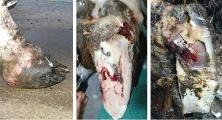
Over the past 10-15 years, there have been a number of reports describing new disorders of the bovine digit. Toe necrosis was the first of these, and has been characterised as a non-healing lesion that penetrates through the horn to involve the corium, usually at the wall of the toe. Atypical manifestations of classical hoof disorders, including white line disease and sole ulcer, have also recently been described, which are usually more severe and persistent. Research by our group has demonstrated that these non-healing presentations are highly associated with DD treponemes and it is speculated that pre-existing claw-horn lesions may become secondarily infected by these organisms. We believe that the incidence of these treponeme-associated disorders is increasing, and are becoming an increasing problem in herds that are already affected by digital dermatitis.
Footrot
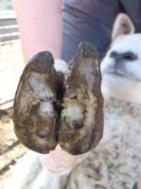
Footrot is an infectious bacterial diease of sheep and other ungulates that has been recognised since the 18th century. Typically, footrot begins as an interdigital dermatitis that results in the subsequent formation of an interdigital wall lesion and eventual separation of the horn from the sensitive dermis underneath. Dichelobacter nodosus is considered to be the primary invading pathogen, although the involvement of other bacteria, including Fusobacterium necrophorum, is likely to be essential. Footrot is a major challenge to farm animal welfare and is associated with impaired feed intake, production losses and reduced wool strength.